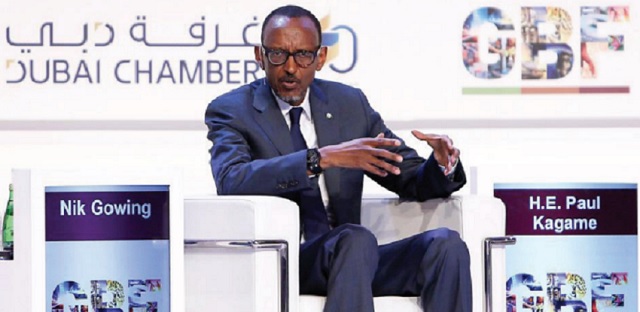
Why it wouldn’t work elsewhere in Africa
Kampala, Uganda | NIC CHEESEMAN | Rwanda is often touted as an example of what African states could achieve if only they were better governed. Out of the ashes of a horrific genocide, President Paul Kagame has resuscitated the economy, curtailed corruption and maintained political stability.
This is a record that many other leaders can only dream of, and has led to Rwanda being cited as an economic success story that the rest of the continent would do well to follow.
In countries like Kenya and Zimbabwe some have argued that their leaders should operate more like Kagame. In other words, that job creation and poverty alleviation are more important than free and fair elections.
In response, critics have sought to puncture Kagame’s image by pointing to human rights violations committed under his leadership. This is an important concern. But the notion that the Rwandan model should be exported also suffers from a more fundamental flaw: it would not work almost anywhere else because the necessary conditions – political dominance and tight centralised control of patronage networks – do not apply.
The Rwandan model
Many of the achievements of Kagame and his governing Rwandan Patriotic Front party are impressive. He took over a deeply divided nation in desperate need of economic and political reconstruction in 1994. Since then, Kagame has established firm personal control over Rwandan politics, generating the political stability needed for economic renewal.
Instead of sitting back and waiting for foreign investors and the “market” to inspire growth, the new administration intervened directly in a process of state directed development. Most notably, his government kick-started economic activity in areas that had previously been stagnating by investing heavily in key sectors. It has done so through party-owned holding companies such as Tri-Star Investments.
Combined with the careful management of agriculture, these policies generated economic growth of around 8% between 2001 and 2013. Partly as a result, the percentage of people living below the poverty line fell from 57% in 2005 to 45% in 2010. Other indicators of human development, such as life expectancy and literacy, have also improved.
An example for Africa?
Despite the impressive headline figures, a number of criticisms have been leveled at the Rwandan model.
Most obviously, it sacrifices basic human rights – such as freedom of expression and freedom of association – to sustain the ruling party’s political hegemony. The Rwandan system, therefore, involves compromising democracy for the sake of development. That decision may be an easy one to make for those who enjoy political power, but is often rejected by the opposition.
Less obviously, the use of party-owned enterprises to kick start business activity places the ruling party at the heart of the economy. It also means that when the economy does well, the already dominant Rwandan Patriotic Front (RPF) is strengthened. This empowers Kagame to determine who is allowed to accumulate economic power, which in turn undermines the ability of opposition leaders and critics to raise funds.
These arguments have been around for some time. But they have done little to dampen the allure of the Rwandan model for some commentators and leaders.
Given this, the strongest argument against exporting the Rwandan model is not that it is undemocratic and gives the ruling party tremendous economic power. It’s that it won’t actually work.
 The Independent Uganda: You get the Truth we Pay the Price
The Independent Uganda: You get the Truth we Pay the Price



